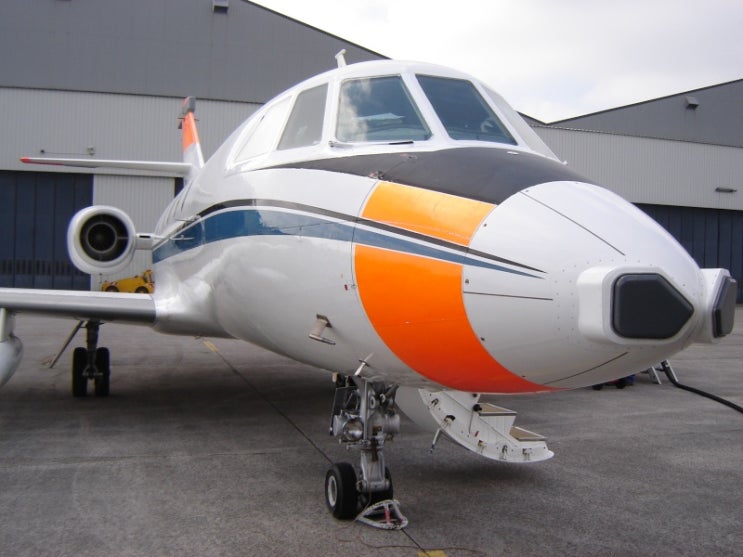i understand it clearly, it you who keep making up nonsense to support your agenda that rafale is some sort of god like machine
Why do you think Trappier announced in the French Parliament that not even the F-35 can equal the Rafale?
say what? where exactly does it say Spectra can adapt and develop a jamming profile that suitable to the threat that isn't in its library?
There are French and India professionals on the forum I'm usually on.
every single one with sensor fusion can do that automatically, even the one without sensor fusion can do that with the help of pilot
It can't. Rafale fuses raw data, the others don't. And F-35 is not ready.
That's not sensor fusion. That's decluttering processed data.
SH's sensor fusion is completely different. It has separate computers for the radar, IFF, EW etc. After all the data is processed, it is sent to another computer. This computer decides which sensor has managed to extract the most amount of data, and then displays that on the screen. Pilot has to do the rest of the work in order to get more data from other sensors.
What Rafale does is takes raw data for all sensors and then processes it together. It doesn't have separate computers for radar, IFF, EW etc. All the processing is done by one computer by taking raw data from all sensors as input, even MICA's IRST. For example, the computer compares radar signatures of all the returns with the IR signature within the same viewing angle. Then the computer can de-clutter the data, including false alarms, by comparing the two pictures. It can even fuse the best targeting data from multiple sensors, like range from radar and angle from IRST.
Source? evidence?
The F-35 claim to do exactly the same thing
Yes, only the F-35 can do this, along with Rafale, but others cannot.
The F-35 is only at IOC, of course it wont have all the capabilities yet, big deal?
That's among the reasons why Trappier said nothing today matches the Rafale.
do you even understand what is pulse compression? it has nothing to do with the ability to geolocating threat so your angular accuracy doesn't matter, point is if you just produce cancellation pulse to every single signal you received no matter if they are in threat library or not, you will ended up jamming ground radar reflection and data link reflection as well as background noise
No. And I don't think you are able to understand what I'm saying. Geolocating threats is an extremely important requirement for active cancellation. Without that, it is impossible.
And where is the source that Spectra have 0.1 deg angular accuracy? what kind of target? ground? air? moving or fixed? etc
A lot of that is secret.
So what part do you intended to shrink to get 10 times smaller? the phase shifter? or do you want to shrink the amplifier?
Nothing is shrinking. The size is relative to performance. GaN is 10 times better, so you need 10 times lesser number of T/R modules to get the same kind of performance as GaAs. That's why Spectra's current jamming performance has increased by at least 5-10 times using the same aperture size.
just because the materials burn at higher temperature doesn't mean you will need less cooling, the heat produced by the equipment still there, if you dont get rid of them, not only your other chips will burn but your fighter will also shine like a Christmas tree in Infrared wavelength
Your cooling requirement is dependent on the safe operating limits of the HEMTs. You need lesser cooling than you do for GaAs.
so you basically make up the 3000 T/R modules number did you? .
I think you have difficulty understanding what I'm saying. Why don't you read what I originally said.
Go to post 17 and read what I actually said.
give me a fucking break, it isnt a pilot who told you, i am so feed up with these BS pilot story, the truth is some member on IDF pretend that he is a pilot, then he said a bunch of BS nonsense, and everyone there eat that up
Haha.
Anyway, the original date was 2025, open source news from all the way back in 2011. The date was originally posted in Combat Airforces Monthly. But all development has been accelerated because India will also be a funding party. Plus total Rafales to be manufactured has roughly doubled in potential. GaN arrays for Rafale is already ready. If some country wants it, they can have it immediately, within the next 3 years, but at greater expense. The 2021 date is for the French air force.
Rafale will have 360 degree radar coverage from 2021 onwards.
This article from 2011 mentions side arrays.
http://aviationweek.com/awin/plans-further-rafale-upgrades-emerge
Potential radar cross-section (RCS) improvements are under consideration, as are equipping the fighter with additional radar arrays for greater spherical coverage and adding thrust vector control to the two
M88 turbojets.
For instance, the side arrays would be used to increase radar coverage.
They also said Spectra will get GaN upgrade by 2020, but that's already been done.
This is the upgraded one.
I would recommend going through this thread first.
https://defence.pk/threads/the-rafale-hidden-beauties-and-its-future.422896/
where do you get all these BS 500, 200 T/R modules number from.? is there any actual source or is this the same BS as last time?
It's logic. You can't have radar performance with lesser than that. The side arrays are half the size of the main array.
No it doesn't, the F-35 is planned to have one, and it has space for one ( replace the fan in the B version) , internal space of Rafale is packed
Rafale's laser comes in wing mounted pods.










